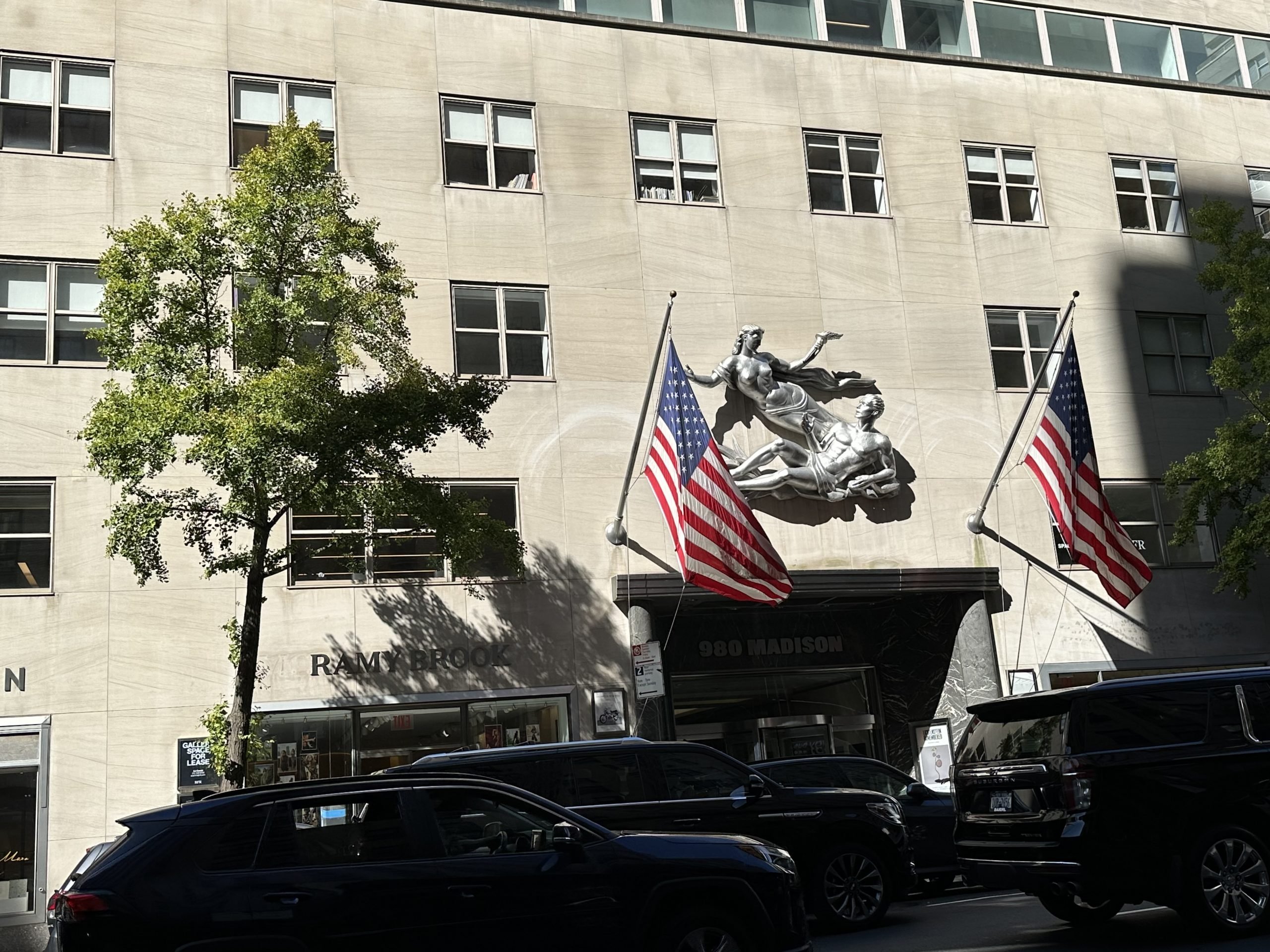
It’s an end of an era for one of New York’s longest-running, if unofficial, art institutions: 980 Madison Avenue.
Last month, RFR Holdings, which owns the edifice known for the aluminum figure of Venus on its facade and is home to prominent tenants led by Gagosian gallery, notified its bondholders of a proposed long-term lease of more than 85 percent of the space to Bloomberg Philanthropies, according to filings related to the building’s mortgage.
The philanthropic arm of billionaire Michael Bloomberg’s empire is slated to lease the 115,824 square feet of space on second through six floors for 30 years, with rent of $185 per square foot, filings show. The deal has been “conditionally approved,” pending a green light from RFR’s mezzanine lender, which finances the riskiest portion of a commercial mortgage.
At full occupancy, Bloomberg Philanthropies, which gave away $1.7 billion to various causes in 2022, is looking at $21.4 million in annual rent, according to Artnet News’s calculations. The lease would expire on July 31, 2053, filings show.
The foundation will take over spaces as the current tenants exit their leases and will occupy 70 percent of the space by the end of 2025, filings show.
A representative for RFR declined to comment and representatives for Bloomberg Philanthropies didn’t respond to an email seeking comment.
Larry Gagosian, Jeff Koons, Aby Rosen.
Photo: Neil Rasmus/BFAnyc.com
The deal with Bloomberg Philanthropies arrives amidst signs of resurgence for the Upper East Side’s art district. Sotheby’s is returning to Madison Avenue in 2025, following its $100 million acquisition of the Breuer Building earlier this year. Last week, London’s White Cube gallery opened a flagship space two blocks north of 980, at 1002 Madison, and has also rented office space in the building.
Built in 1949 for Parke-Bernet Galleries, the famed auction house which merged with Sotheby’s in 1964, 980 Madison is instantly recognizable thanks to the 16-foot-wide Venus sculpture above its doors. The building was dubbed “Grand Central Terminal of the art world” by the New York Times in 2006 and considered key to creating an art district on the Upper East Side.
In 1987, Gagosian leased a smaller space in the building, eventually expanding into its current multi-floor spread. The gallery’s first show there, “Jasper Johns: The Maps,” opened in February 1989. Other significant shows included “Cy Twombly: Bolsena Paintings,” in 1989-1990, and “Malevich and the American Legacy” in 2011. Gagosian is the building’s largest tenant by far, with about 42 percent of the total office space.
The building “has been our uptown home since 1987, so obviously this will take some adjustment, but I am happy to say that we are in the process of securing a great new location in the neighborhood,” Larry Gagosian said in an email to Artnet News.
“It’s disappointing that what’s been an art building since its inception is going to be replaced with offices,” said Edward Tyler Nahem, whose gallery on the third floor recently doubled in size.
Some were puzzled why Bloomberg Philanthropies chose 980 Madison at a time when there is so much available—and less expensive—office space elsewhere in Manhattan.
But, it makes sense. Bloomberg Philanthropies has occupied a mansion on the corner of Madison and East 78th Street for years. Bloomberg himself lives in the neighborhood. And the building has plenty of cachet.
“It’s a very prestigious place to be,” art dealer David Nash said, listing its history, design, and location.
A view of “Jean-Michel Basquiat: Art and Objecthood” exhibition at Nahmad Contemporary in 2022, at 980 Madison Avenue. Photo: Katya Kazakina
“It’s going to be an end of an era,” said Joe Nahmad, whose Nahmad Contemporary has been on the third floor for a decade. “It’s such a historic building.”
For Nahmad, the change is ushering in the gallery’s next chapter, and soon.
“There are a lot of decisions that have to be made, a lot of possibilities and opportunities,” Nahmad said, adding that he’s open to locations beyond the Upper East Side.
RFR, whose co-founder Aby Rosen is a major collector, borrowed $197.6 million in securitized debt against 980 Madison in 2021, according to mortgage documents. RFR’s attempts in 2006 to add a Norman Foster-designed residential tower atop the historic structure sparked fierce community opposition, becoming tabloid fodder.
“I like the status quo,” said Warren Weitman, who worked at 980 Madison for about seven years, starting in 1978. “That was always the art building. But things change and people adapt. There’s a lot of empty space on Madison.”
More Trending Stories: